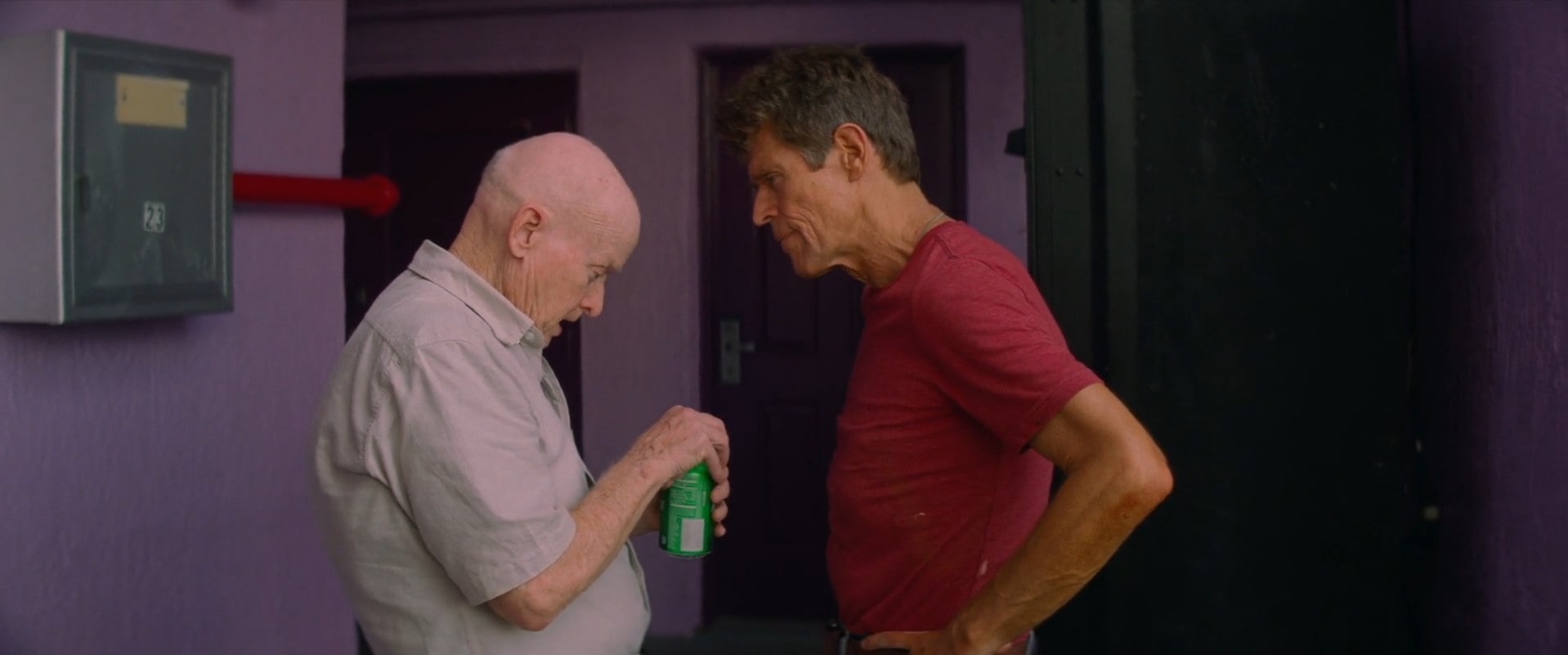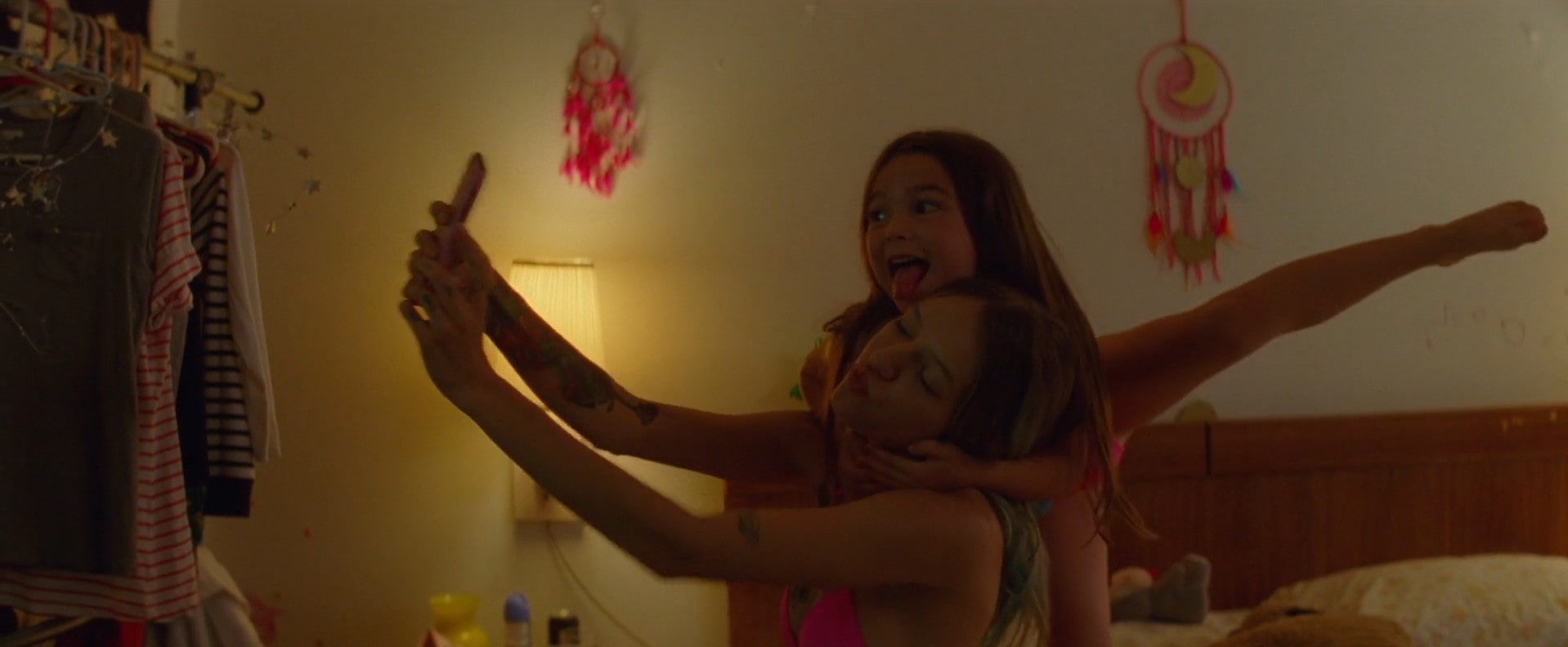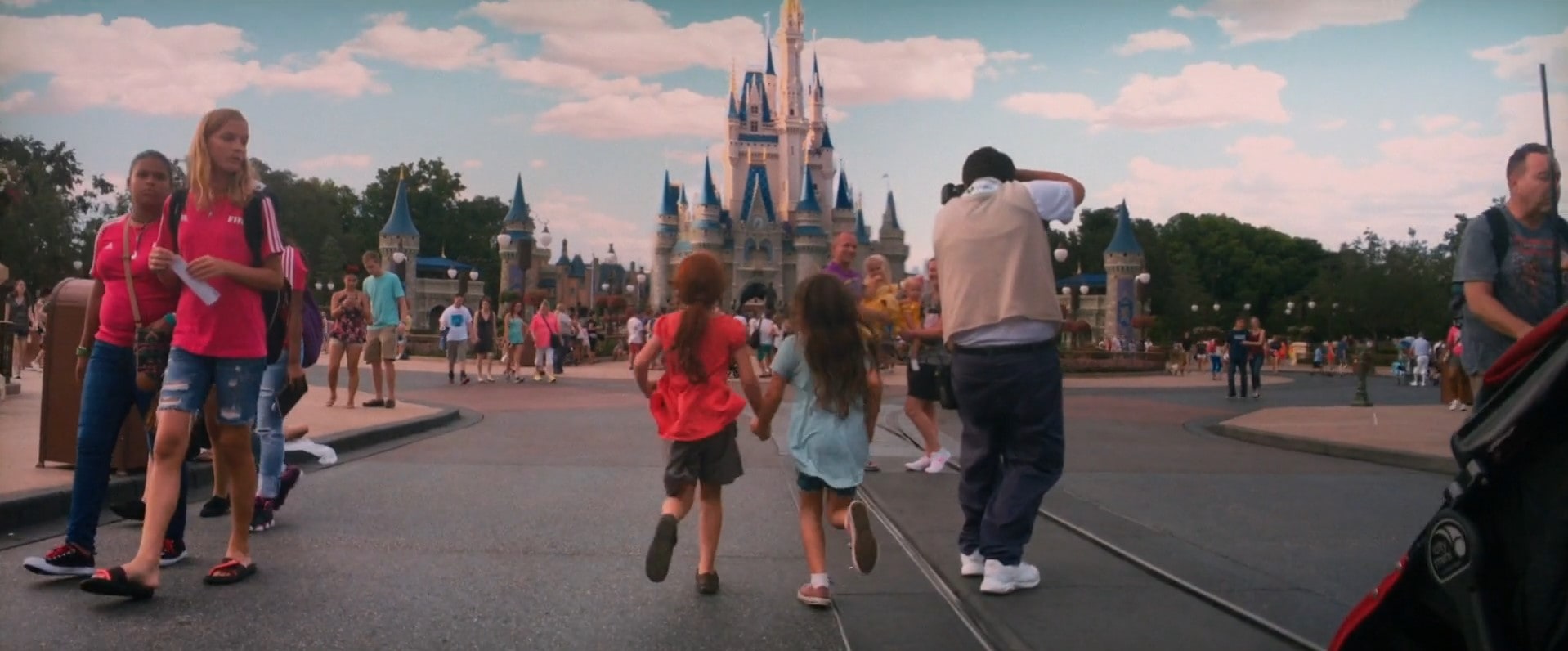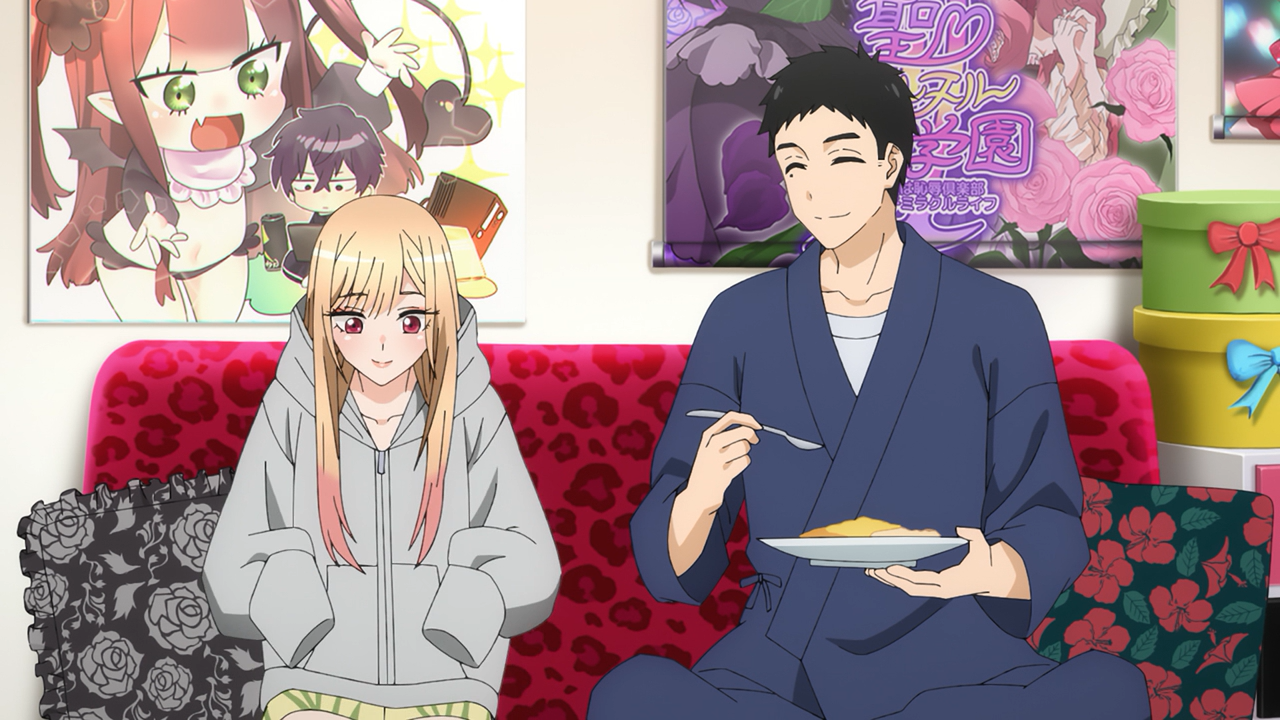This is a controversial one: people either thought the ending made the movie or ruined it. Regardless of where you stand, however, The Florida Project fulfills its aim of provoking thought and discussion.
The film follows Moonee, a six-year-old who lives with her mother Halley, in ‘Magic Castle’, a motel in Kissimmee, Florida, near Disney World. Moonee is a precocious child: she spends most of her time unsupervised, engaging in playful antics with the other kids from the budget motels.
Moonee’s mother is a dancer and a chancer who is both a victim of ‘the system’ and an active participant in it.
Halley brings Moonee along as she hawks perfume to tourists, and steals and cheats her way into getting the food and rent they need.
Movie Explained
Sean Baker’s The Florida Project is more about contradiction and irony than it seems to be of anything else. To think about it, almost every movie that revolves around children is about the same.
Making a movie about children has one major purpose showing the contrast between innocent mischief in children versus the evil in the garb of social decency in adults.
But the genius of The Florida Project lies in its subtle way of highlighting the contrast between the two up to a level that mocks the society or, to be specific, any civilized human life that refuses to take a moment and imagine themselves in others’ situation.

The story revolves around the lives of the children of some low-class motel residents of Florida, who struggle on a daily basis just to find temporary roofs over their heads.
But the children are visibly worry-free and literally happy with the people around them. They have no grudges, no ego, and literally no problems despite their parents having limited money and resources.
For example, Jancey is happy to clean the spit of other children despite what they did to her grandma’s car only because they requested her to do so. The adults, on the other hand, throughout this movie, have several internal conflicts, fights, and ego clashes and are terribly inconsiderate to each other.
Child And Adult Perspective
Sean Baker uses a simple technique to portray different perspectives and showcases contradictions and irony visually.
From the children’s perspective, most of the shots are from low angles, even when they are not around. High angles are only used when adults are involved in topics that are not at all related to or understood by children.
The movie is set in Florida, which every person on the earth relates to with Disney World, but here are the hidden poor of the “civilized” society who are ready to do literally anything for money.
The Colorful Backgrounds
The misery and suffering of the residents are eclipsed by the high-contrast colors of the motels. The walls are beautifully bright and visually attractive just like any child would normally see.
Everywhere the children go, the background is filled with Disney trademarks or brightly colored buildings, adding to the positive mood of the characters.
But in the case of adults, the background becomes dull and distinct, which brings us into the reality of the monotonous dull world we live in.
The Viewpoints And Mockery
Consider the scene where a pedophile intrudes into the motel premises, almost targetting a group of children, following which Bobby intervenes and finally saves the day.

There are two aspects to how Baker shows contradiction. The first is metaphorical. Sean Baker starts this scene with the kids entering the benches and yelling at the helicopters, followed by the pedophile entering the scene.
This subtly gives the viewer a bone-chilling realization of the rampant sexual exploitation of children by the priests in churches.
The second one is the contradiction through viewpoint. Once Bobby confronts the pedophile and shoos him away from the premises, the camera cuts to Mooney, and Jancey, both of them looking confused and a little scared because, according to them, Bobby isn’t saving them, but attacking a helpless old man.
Baker brings two equally prevalent contradictions in a single scene, and that is brilliant storytelling. And not just this scene, Baker uses the same technique of mockery throughout the movie.
In fact, the mockery starts with the name itself. While creating Disney World, the Walt Disney Company officially called the plan The Florida Project, promoting it as the perfect land for the ones who visit there, which Sean Baker intellectually uses to contradict the misery-filled poor residents of the motels not situated far from Disney World.
Our Judgemental Thinking
As the story progresses, we are able to see the difference between the enthusiastic innocent children and the boring insensitive adults. Reality kicks in when the authorities come not only to snatch the child away from her mother but to snatch the childhood away as well.
One part of our conscience doesn’t want that to happen because they all looked so happy. Every illegal action of Halley, be it stealing or prostituting, feels justified for the reason that she is a caring mother if not a responsible or successful one.

But truth be told, it is the other part of the conscience that would have dominated our minds. We would have volunteered to help the authorities take away the child without her consent because we, as a society, are too quick to be judgmental of someone else’s miseries and sufferings that we neglect the basic sense of humanity.
Ending Explained
At the end of the film, Halley is investigated for prostitution, and Moonee is about to be taken by social services. But Moonee runs off with her best friend Jancey to Disney World, the supposed ‘happiest place on earth’ where these underprivileged children were barred from for so long.
Just like director Sean Baker’s earlier film Tangerine, the ending to The Florida Project was shot entirely on iPhone. There are two prominent theories about what this represents.
First, it was only a dream that happened in Moonee’s mind. For the first time in the film, the music score plays in the background, and Baker switches from film to digital.
This stylistic shift feels jarring and abrupt, hinting at the ending’s surrealism. Perhaps this is a mere figment of Moonee’s imagination, a coping mechanism that we have seen throughout the film.
Baker states, “She can’t go to the Animal Kingdom, so she goes to the ‘safari’ behind the motel and looks at cows. She goes to the abandoned condos because she can’t go to the Haunted Mansion.”
The Florida Project is about childhood and innocence that bloom in and despite poverty. Kissimmee transforms through carefree and uninhibited imagination: the budget hotels become playgrounds, and difficult circumstances, adventures.
Moonee’s make-believe dream for Jancey to dash off with her to Disneyland implores us to sympathize with the girls, just as Baker does, by giving them their deserved but false happily ever after.
The Ending Is Real
The second theory is that the ending is real: Moonee and Jancey did go to Disneyland, but this dreamlike sequence is not a particularly hopeful or optimistic one.
The girls try to pursue the freedom and innocence promised in the ‘happiest place on earth’. But the irony is that Disneyland is a fantasy, and it cannot be the haven that they need.

The excitement of the ending is juxtaposed with their bleak future: Moonee and Jancey cannot hide away from the adults forever, their guardians are not likely to improve their circumstances, and a life determined by social services is an uncertain one. Yet there is something oddly brave, even heroic, about the way Halley and Moonee battle their fates.
The Kids And The Adults
Moonee’s speech and mannerisms strongly resemble Halley’s, which is clearly inappropriate for a child.
Moonee has clearly inherited her mother’s fighting spirit. And even though Halley is not a responsible or even a safe parent, we still root for them to be together because the love between them is undeniable.
Only at the end of the film does Moonee break down her tough exterior and betray her age. We are reminded that this independent kid-adult is only six years old. Her vulnerability is heartbreaking.
The gritty social reality and dangers Moonee faces, as in the rest of the film, cannot be masked by the bright colors or the gaudy, touristy settings of ‘Magic Castle’ and ‘Futureland’. The children of these budget motels are right next door to the magical Disneyland but are ironically left neglected outside its gates.
Whether you love or hate The Florida Project’s ending, you must admit it is one that stays with you and makes you think long after the credits have rolled.
There are no rescuers in The Florida Project. Not even the manager Bobby, whom we all expected to run after and save Moonee. No deus ex machina or dramatic conclusions. We are left only with the image of innocent children running bravely to fight for their happily ever afters, if only for an instant.




